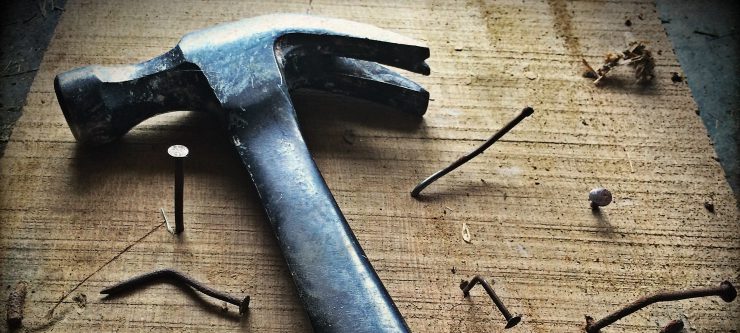Seeing a contractor’s estimate after unloading your wallet on a new house can be enough to think, I’ll just fix this myself. But to avoid costly mistakes, many home repairs and renovations should be completed by a trained professional.
The skills, experience, and tools professionals have are almost always worth the cost and can save you when it comes time to sell. Here are six of the most common DIY repair mistakes made by homeowners.
Plumbing:
1. Not waterproofing.
If you’re replacing a bathroom countertop, replacing pipes, or doing repairs to weather-prone areas, be sure you’re waterproofing enough to keep the area dry. Use caulking, backsplashes, and sealants in the right places to avoid water damage and potential mold.
2. Using the wrong materials.
There’s a difference between PVC pipes, uPVC pipes, and CPVC pipes, and using the wrong one today can force you into more repairs tomorrow. Sealants and valves are also designed for specific purposes. The wrong materials can cause leaking, warping, and permanent damage.
Electrical:
3. Cutting wires too short (or too long).
When replacing outlets and light switches, wiring should stick out about three inches from the wall. Shorter wires can cause poor electrical connection while longer wires can make it difficult to fit everything into the electrical box as well as determine which wires to work with in the future.
Also be sure to strip a wire at the appropriate length, usually listed on the back of the outlet or light switch. Remember, home inspections are very thorough.
4. Using the wrong wires.
When wiring a brand new switch or outlet, purchase a wire that is rated for the appropriate amperage of what you’re installing. 14-gauge wiring is able to carry up to15 amps of current, while a 12-gauge wire can carry up to 20 amps. Check your fuse in the circuit breaker for which wiring to use.
Walls:
5. Removing studs.
Maybe a room would get more sunlight if a wall wasn’t there, or a pocket for a shelf would look great if those studs weren’t in the way. If you’re ever considering cutting or removing studs and you’re not sure of the implications, call a professional.
Removing the wrong stud could cause weakness in the structure of your home, and you never know what electrical or plumbing you’ll run into when you start removing sheetrock.
6. Enthusiastic painting.
This one isn’t a safety hazard, but the effects can be just as influential to a buyer in the future. When you paint, make sure you take your time, use painter’s tape, and focus on making the paint job look even and smooth. A bad paint job can cause buyers to second guess or lower their offer. Even your guests may notice a thick drip or bare patches.
Bonus renovation mistake:
Removing unfamiliar items.
Some things in your home may look completely out of place and entirely useless, but take a minute to research if a pipe, wire, or plug is actually necessary before ripping it out.
For example, you may find an empty duct in your basement reaching from outside of the house to hanging above the floor, looking like a forgotten project. But this is a combustion air duct, and it’s actually very important because it brings in outside air to replace expelled air from bathroom fans or fireplaces. Not having this duct can cause your home to fill with exhaust gases from your furnace.
In the end, use caution
The bottom line: If you break out the tools and decide you’re not sure of the consequences of your project, ask a pro. You can also often find answers to your questions with a quick internet search. Just be sure to consider the buyer’s point-of-view if you ever plan to sell your home.
